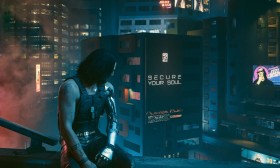Mastering the Madness: A Deep Dive into Necromorph Behavior Patterns in Dead Space 2
Welcome, Engineer, to the Sprawl. You’re not just here for the jump scares and the eerie silence; you’re here to survive. And in the cold, blood-soaked corridors of Titan Station, survival isn't about who has the biggest plasma cutter. It’s about knowledge. Understanding your enemy is your most powerful weapon, more crucial than any stasis module or line gun. The Necromorphs of Dead Space 2 aren't mindless zombies; they are a horrific ecosystem of calculated, coordinated death. This guide is your survival manual, designed to deconstruct their nightmarish logic and turn you from panicked prey into a methodical hunter.
Let's start with the foundation of the Necromorph threat: the Hunter. No, not the unkillable one you meet later, but the basic, relentless pursuit that defines their core behavioral pattern. Necromorphs are not deterred by pain in the conventional sense. They are reanimated corpses, driven by a single, terrifying imperative: to dismember and assimilate. This is the golden rule of Necromorph combat strategy in Dead Space 2. Shooting center mass is a death sentence. Your focus must always, always be on severing limbs. This isn't just a gameplay mechanic; it's the key to understanding their weakness. A Necromorph with its legs severed is a crawling, manageable threat. One with its claws torn off is significantly less dangerous. This principle of strategic dismemberment is your primary survival tool against all but the most specialized variants.
Now, let's break down the specific behavioral patterns you'll encounter, starting with the grunts of the horde.
The Frontline Assault: Slashers and Their Kin
The Standard Slasher is your baseline. Its Necromorph attack pattern is straightforward: a direct, shambling charge, often with loud, guttural screams. Don't be fooled by its simplicity. Its strength lies in numbers and distraction. The key here is to maintain distance. Use stasis to slow a group, then systematically remove the legs from one, the arms from another. The Leaper variant, a Slasher with a tentacle tail instead of legs, introduces a new dynamic. Its movement patterns in Dead Space 2 are erratic; it crawls on ceilings and walls, launching itself in a pouncing attack. The tell is a distinct hissing sound. Listen for it. When you hear it, be ready to sidestep and sever its primary attacking limbs—its blade-like arms.
Then there is the Exploder. This Necromorph's behavior is a lesson in priority targeting. It will charge you relentlessly, its swollen sac glowing ominously. Its sole purpose is to get within blast radius. The best tactics for fighting Necromorphs here are precision and calm. Do not shoot the body. A single well-placed shot to one of its thin, bony arms will cause it to detonate, often taking out nearby Necromorphs. If it gets too close, a quick stasis and a run to cover is your best bet. Ignoring an Exploder to deal with a Slasher is a classic, and often fatal, mistake.
The Ambush Predators: Lurkers and Pukers
This category of Necromorphs tests your situational awareness and target acquisition speed. The Lurker is a former infant, a horrifying concept that translates into deadly gameplay. Its behavioral analysis reveals a patient hunter. It will cling to walls and ceilings, firing three sharp spines in a horizontal spread. The sound of its spines regenerating is your audio cue. The strategy is to stasis it immediately, then sever its three projectile-firing tentacles. In open spaces, they are manageable. In tight corridors, they become one of the most deadly threats, forcing you to divide your attention.
The Puker acts as an area-denial specialist. Its Necromorph attack pattern involves vomiting a stream of corrosive bile, creating pools of acid on the floor that damage you and slow your movement. This behavior is designed to corner you, to limit your evasive options while other Necromorphs close in. The optimal Dead Space 2 enemy tactics against a Puker is to prioritize it. Take out its leg to make it stationary, then sever the large, bloated arm it uses to vomit. This not only neutralizes its primary weapon but often triggers a satisfying explosion.
The Heavyweights: Brutes and Tripods
When the ground shakes, you know you're facing a Brute. This behemoth's movement patterns in Dead Space 2 are deceptively simple. It charges with its massive blades held in front, capable of an instant kill. Its armor makes limb severing difficult from the front. The advanced Necromorph combat techniques for the Brute involve baiting its charge. Wait for it to begin its run, hit it with stasis, and maneuver to its side or back. Its vulnerable, unarmored limbs are now exposed. Focus your fire on its legs to topple it, then finish the job on its arms. It’s a test of nerve, requiring you to stand your ground until the very last second.

The Tripod is another heavy hitter, but with a different approach. It will often stay at a distance, launching powerful projectiles from the sac on its back. Its Necromorph behavior guide dictates that you must close the distance, but carefully. It has a deadly melee combo if you get too close unprepared. Use cover to avoid its projectiles, stasis it when you have an opening, and first destroy its projectile sac to remove its ranged threat, then go for the legs.
The Psychological Warfare: The Pack and The Stalker
Some Necromorphs are designed to break your spirit as much as your body. The Pack, comprised of swift, child-like Necromorphs, swarm you in numbers. Their individual attacks are weak, but collectively they can overwhelm you in seconds. The best tactics for fighting Necromorphs like The Pack is area-of-effect. The flamethrower or the Force Gun is your best friend here. A quick burst can clear a swarm, allowing you to pick off stragglers. Don't try to precision-aim at them all; you will be overrun.
Perhaps the most brilliantly designed enemy, from a behavioral standpoint, is the Stalker. This is where understanding Necromorph AI in Dead Space 2 becomes critical. Stalkers are pack hunters that behave like velociraptors. You will first see them peeking from around corners before darting away. They use cover, coordinate their attacks, and charge in a zig-zag pattern. Their entire Necromorph attack pattern is built on psychological terror. The key to defeating them is to break their routine. Do not chase them. Find a corner or a doorway you can use as a choke point and hold your ground. Listen for their distinctive chittering and pounding footsteps. As one charges, aim for its leg. A single well-timed shot will send it tumbling to the ground, vulnerable to a finishing stomp. By controlling the environment and forcing them to come to you, you turn their clever hunting strategy against them.
The Unstoppable and The Insidious
Finally, we have the specialists. The Divider is a lesson in chaos. Killing one creates multiple smaller, fast-moving entities. The Necromorph combat strategy here is control. Use stasis on the main body and then use an explosive or line gun shot to disintegrate it entirely, preventing the smaller parts from spawning. If they do separate, a quick sweep with the plasma cutter or a force gun blast can clear them out.
And then there is the Ubermorph, the immortal hunter. You cannot kill it. Your only option is containment. This enemy exists purely to teach you resource management and the value of a tactical retreat. Your advanced Necromorph combat techniques for this foe are simple: stasis, run, and complete your objective. Do not waste ammunition trying to kill it; you will only die tired.
Mastering these patterns transforms Dead Space 2 from a horror game into a tense, strategic action-survival experience. You stop seeing monsters and start seeing a set of problems to be solved with the right tools and knowledge. Listen to the audio cues, watch for the visual tells, control the space, and prioritize your targets. Remember, on the Sprawl, fear is a resource. Acknowledge it, but let your understanding of these Dead Space 2 enemy tactics guide your aim. Now, gear up, Engineer. Make us whole again.















